Selecting and storing scion wood for grafting
This is the time of year to begin collecting scion wood if you are thinking you may need to perform some grafting this late winter or early spring.
Top working, or changing varieties in the field, can be accomplished now using the dormant scion wood and inserting into cut scaffolds using the traditional cleft graft method. This approach can yield success, but often requires a little more grafting skill in making the slope cuts on scion wood. Secondly, the cleft graft limits numbers of scions per scaffold to two. Therefore, many delay the work until spring to use the bark graft method where more than two scions can be inserted on a scaffold (more insurance) depending on the diameter of the scaffold (one scion stick per 2-inch in circumference).
The skill needed to make slope cuts on scions requires less practice and skill than the cleft graft scion preparation. The best time is when the cambium is active or bark is slipping for bark grafts, bridge grafts and inarching. Inarching is a practice where suckers that have sprouting from the rootstock can be brought up to bridge a damaged or injured union. It also refers to planting a bare root tree or rootstock adjacent to a tree and grafting the top of the tree into the bark of the target tree.
Once the season progresses and trees experience a drought stress in summer, the cambium slows in activity and so does the opportunity to graft. For this reason, scion wood needs to be collected now while dormant and stored for use some four to seven weeks later. Techniques such as bridge grafting and inarching are used to overcome severe damage to trunks caused by mice and rabbits or bypass dying unions, often caused by viruses such as brown line in plum and black line in walnuts.
Selection of scion wood
Select scion wood from healthy, virus-free plants. Try to avoid trees older than eight to 10 years of age as they have likely bloomed for at least five to seven years or more and possibly contracted pollen-born virus diseases. Commercial nurseries prune “mother-block” trees back each year to avoid bloom and generate vigorous scion wood. This wood can also be purchased for grafting.
Limit wood to one-year-old wood. Avoid any wood or portion of wood that is older. Wood should be straight and have a lot of vegetative buds (narrow buds). This varies among species. Avoid any wood with spurs (fruit/blossom). Wood should be between 0.25 and 0.5 inches in diameter.
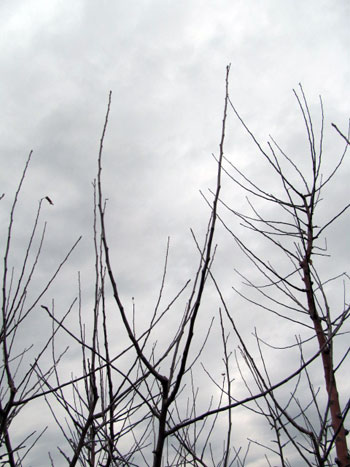
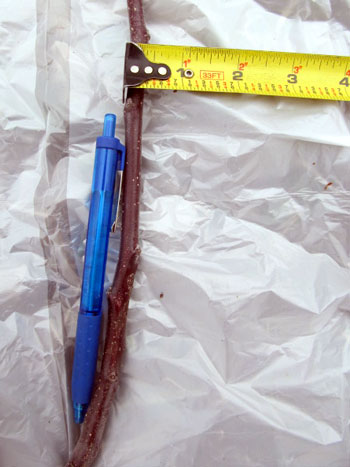
Good candidate growth for scion wood.
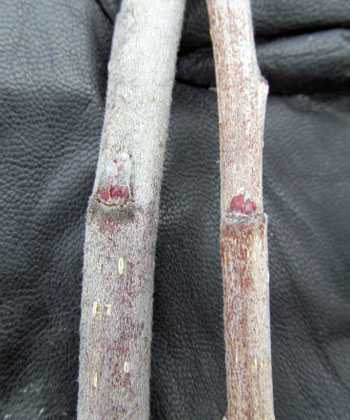
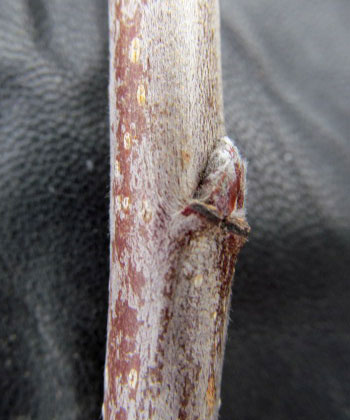
(Left) Mature apple mud at basal end of shoot on the left and immature portion at distil end on the right. (Right) Close up of mature apple bud.
While some grafters like to use watersprouts, Michigan State University Extension recommends avoiding excessively vegetative shoots. If it is the only healthy, straight wood available, discard the terminal ends where there are less carbohydrates stored and where buds lack maturity.
Avoid suckers that arise from the rootstock, below the union. One of the problems with using watersprouts is that the tissue often lacks in stored carbohydrates, which is important in the wound healing and callusing process.
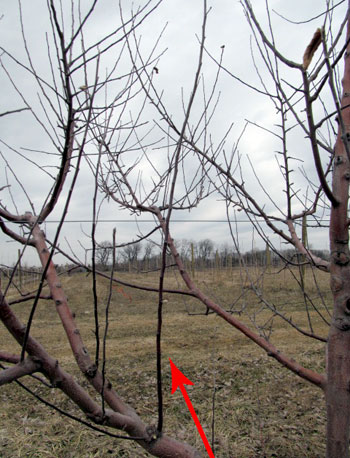
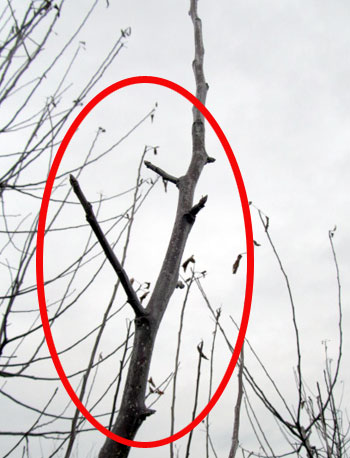
(Left) Candidate watersprout growth for scion wood (center). (Right) Avoid excessively vigorous watersprout growth with vegetative spurs. Section above spurs may be satisfactory.
Storage of scion wood
Bundle pieces of scion wood and place into a polyethylene bag. I like to bundle the wood in 14-18-inch lengths if possible to insure adequate length, especially if bridge grafting is anticipated. The longer pieces gives the grafter the option to remove ends that, after storage, have dried and allows for flexibility in bridging long portions, around 8-10 inches, of damage by rabbits or equipment.
Place lightly moistened paper towels or wood shavings in with the scion wood. Be sure not to over-wet the paper towels or shavings as this can attract mold after four to eight weeks in storage. Some grafters like to dip cut ends in wax prior to storage to reduce desiccation.
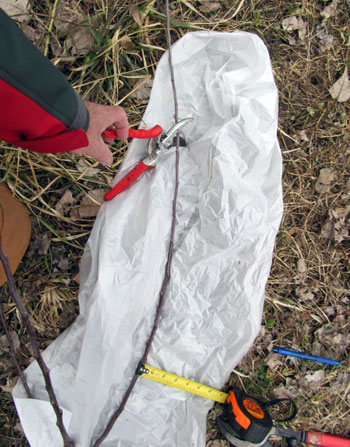
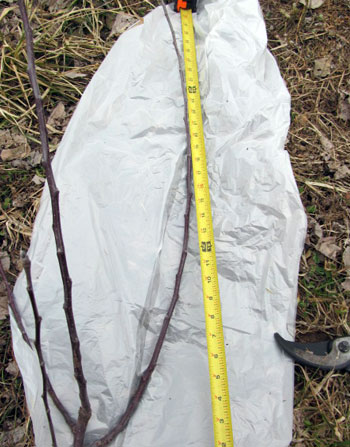
(Left) Remove distil end where wood and buds are less mature. (Right) Cut to 12-18 inches in length.
See also:



 Print
Print Email
Email


